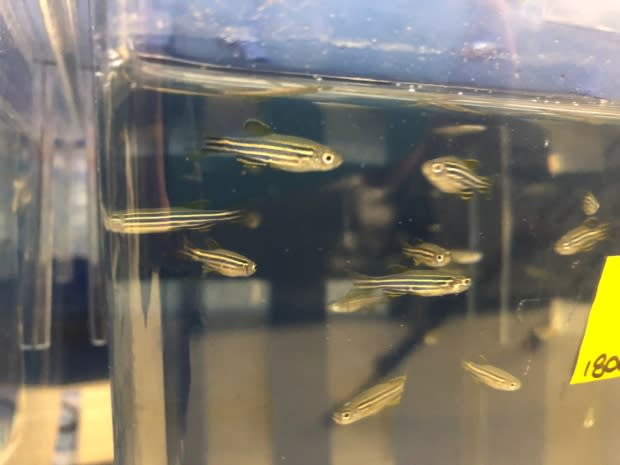How zebrafish are changing the way doctors treat Maritime children with cancer
Inside a lab at Dalhousie Medical School, 12,000 zebrafish swim in tanks that line the room from floor to ceiling.
It looks like a pet store or an aquarium, but these guppy-sized fish have an important connection to children being treated across the street at the IWK Health Centre: they share the same cancers.
"That may seem a little science fiction," says Dr. Jason Berman, a pediatric hematologist-oncologist at the Halifax hospital. "Remarkably, these little fish are genetically very similar to humans.
"And that's really important when we're studying cancer, because cancer is really a genetic disease."
Berman, who treats children from across the Maritimes, transplants bone marrow biopsies from his patients into the zebrafish at his lab at Dalhousie University. He can then test different drugs to see how the children might respond to various treatments.

"Because the larvae are small and thin, we can just bathe them in the compound of interest, that gets absorbed into the larvae and we can see responses," he says.
Another advantage to using zebrafish is they can produce about 200 transparent larvae. Cells are fluorescently labelled to give researchers a clear view of what's happening.
"If you can imagine, we have these florescent green or blue human cancer cells that are growing and dividing in the zebrafish and we can track their movement in the fish and how they behave," says Berman.
There are several zebrafish labs across the country, but the Dalhousie facility is the only one that focuses on childhood cancers and rare genetic disorders.
Hannah Drake, a marine biology co-op student, is spending this term working in the lab. It's her job to sort the fish in their tanks, making sure they have room to grow and are being fed correctly.
"I never thought I'd be working with cancer and fish," she says. "It's absolutely amazing just to get to participate."

Berman makes sure his patients are involved in the process. He brings families across the street to see the work first-hand.
"They can come and see how we injected their samples into the fish and how the fish is behaving with those transplanted cells," he says.
Zebrafish react quickly to new treatments — within a week or so — which is something Berman says has the potential to change the way cancer is treated in the future.
"So the idea would be that we can use this to help personalize therapy in patients at the time that they have a biopsy of their cancer and there may be a couple of different treatments that are being considered."
While Berman focuses largely on leukemia, sarcomas and neuroblastoma, the lab has also done work with some adult cancers including breast and lung cancers.

